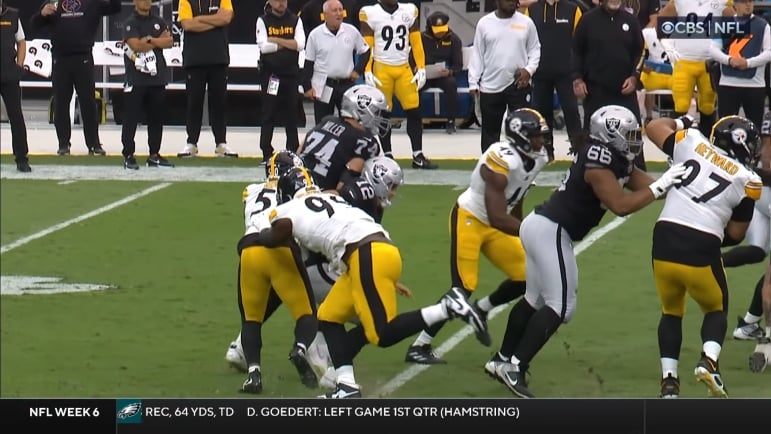The Pittsburgh Steelers’ defense played it safe this season, hardly resembling anything like “Blitzburgh” of previous eras. Trusting their front four to get home, the Steelers finished with just 40 sacks as T.J. Watt had his lowest output in a non-injury season since his rookie season. For Bob Labriola, he thinks the Steelers’ plan was intentional to keep the ball in front of them.
Weighing in on a reader question for why the Steelers didn’t blitz this season, Labriola thinks Pittsburgh valued preventing the big play over making one.
“That’s a question I cannot definitively answer, but my sense is that of primary concern to the defense is ‘keeping a lid on it.’ By that I mean not allowing chunk plays that either directly ring up the scoreboard, or set up a scoring opportunity, or flip the field – those single snaps of the ball that have an impact on the outcome of a game. Maybe the idea is to prioritize the minimizing of chunk plays and then count on someone on the defense to make a play to get off the field.”
Per our defensive charting posted Tuesday, Pittsburgh’s blitz rate rose from midseason to finish the year at 29.0 percent. Still, it’s the fourth-lowest mark we’ve tracked dating back to 2014 and a decrease from last season’s 31.2 percent. At their peak, the Steelers blitzed 44.1 percent of the time in 2018.
Other outlets paint a picture of Pittsburgh not getting home. Pro Football Reference lists the Steelers generating pressure just 22 percent of the time, 17th in the NFL (our charting is different with a 30 percent pressure rate). Their hurry rate was even worse, an ugly 29th leaguewide at 5.8 percent.
If it was its rationale, did Pittsburgh prevent the big play? Largely, yes. The Steelers allowed 47 completions of 20-plus yards, tied for ninth fewest in the NFL. A big improvement from 2023 when the unit allowed 63 such plays, fourth worst.
The Steelers trusted their front four to get home and protected a secondary that battled injuries, had youth, and experienced communication breakdowns late in the year. For any defense, sending the “core four” and dropping seven into coverage is ideal if it is still able to generate pressure. Especially given how often Watt gets chipped, forcing teams to send only three out in the core pattern. If seven are covering three, it’s a big defensive advantage.
But Pittsburgh has to find ways to consistently generate more pressure next season. That could mean changing Watt’s alignment or blitzing more often to create 1v1 opportunities. For the Steelers, 40 sacks and a decreased pressure rate is not how they win.







